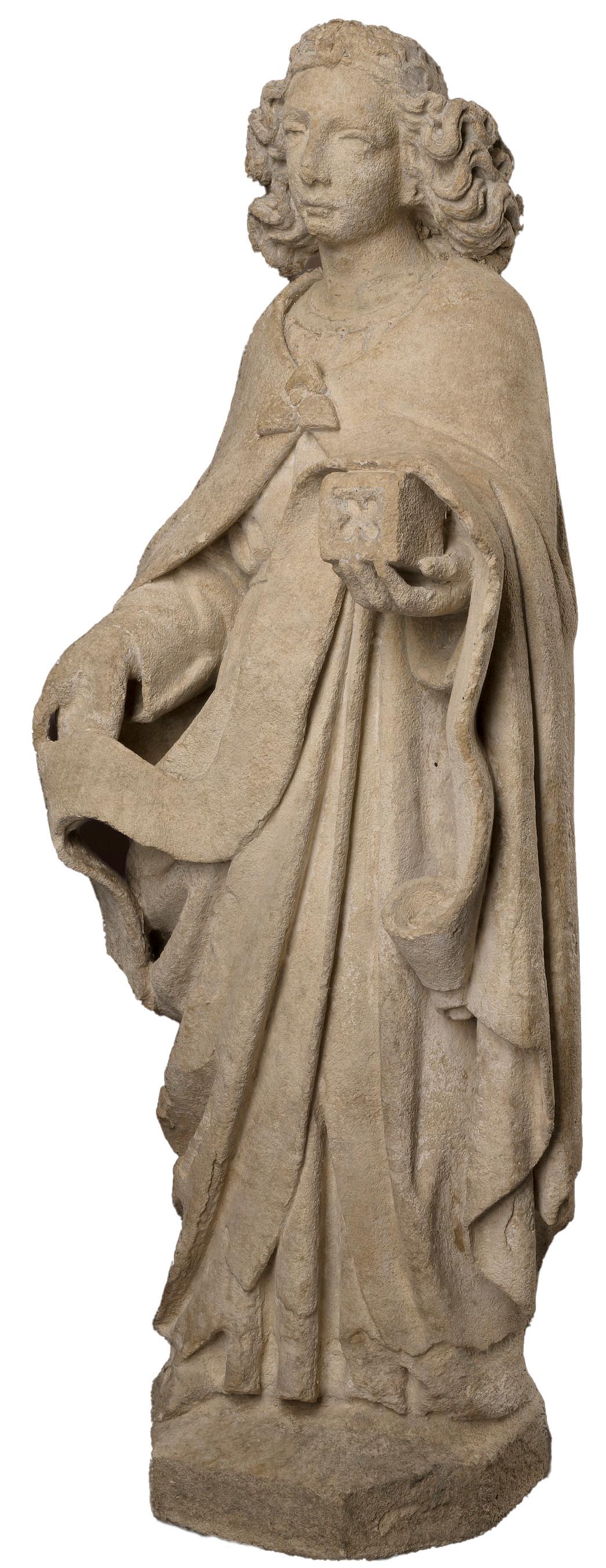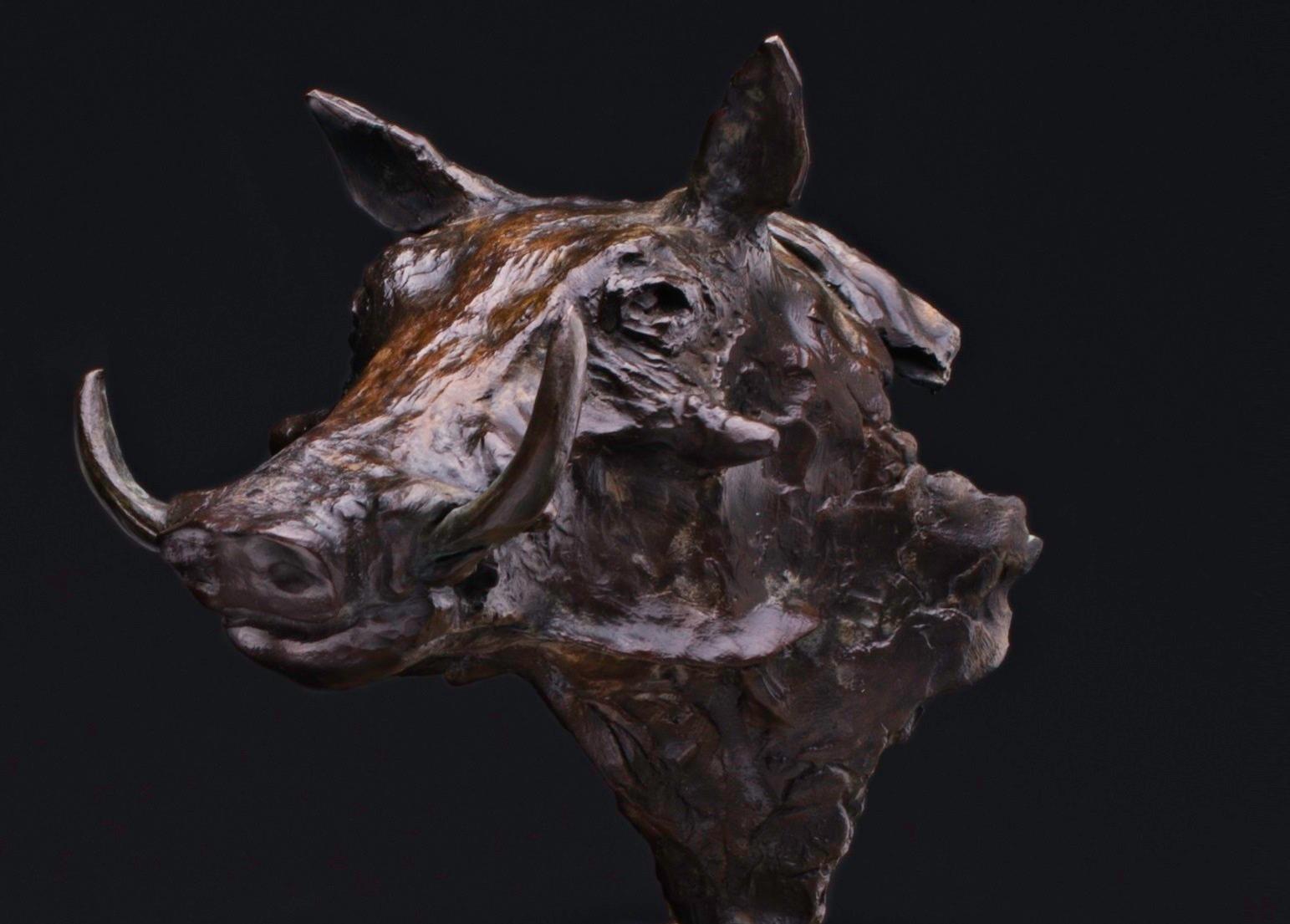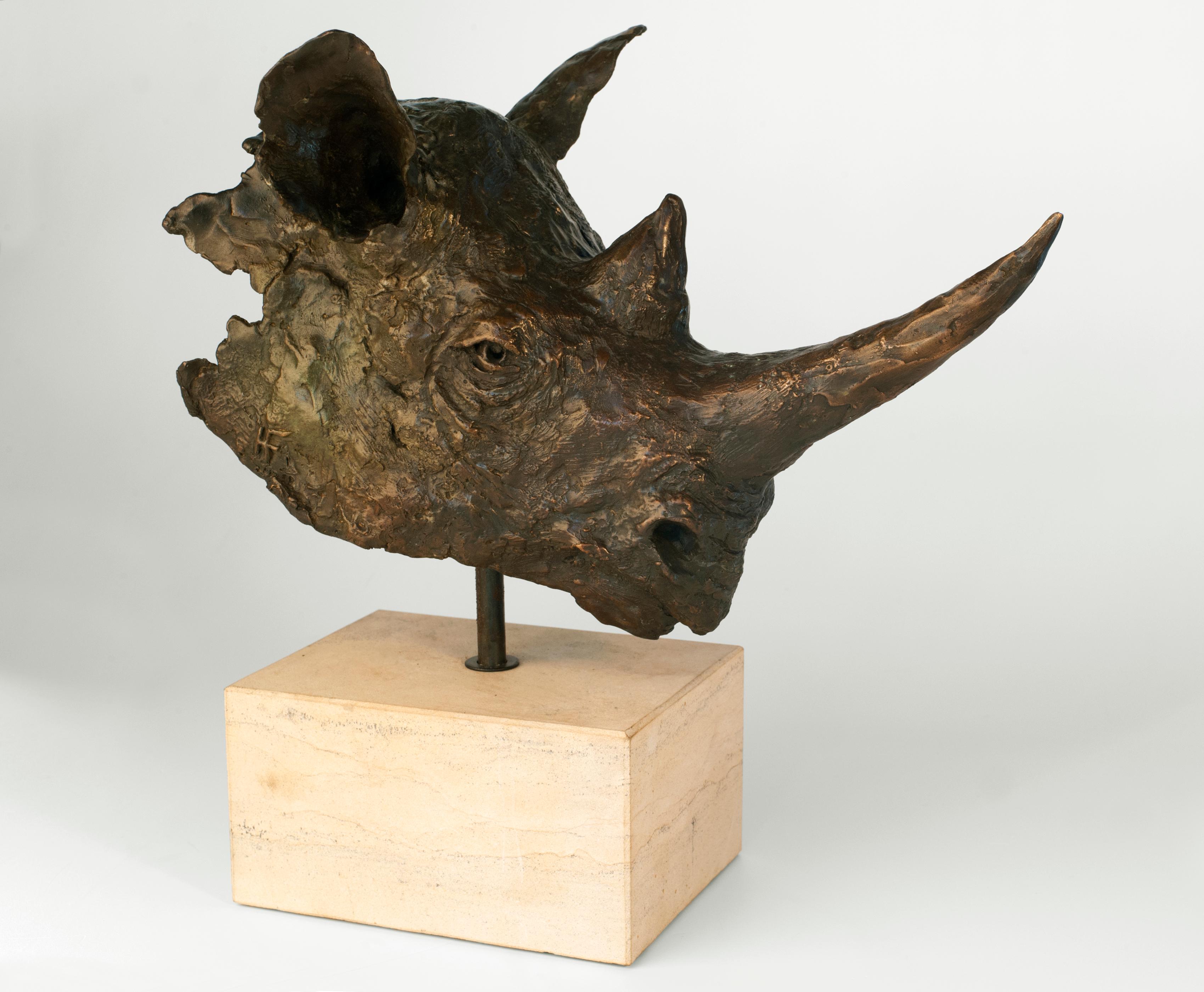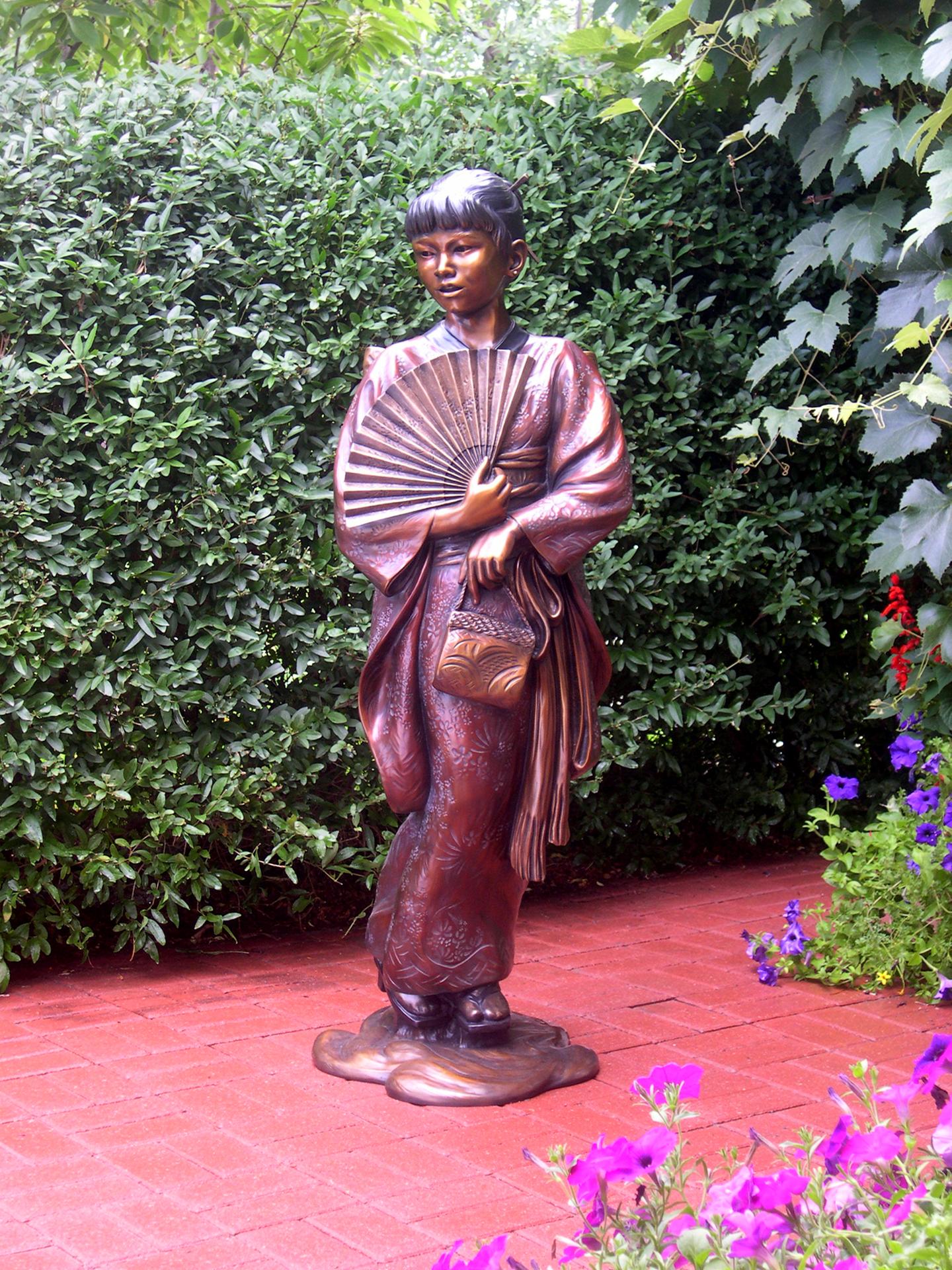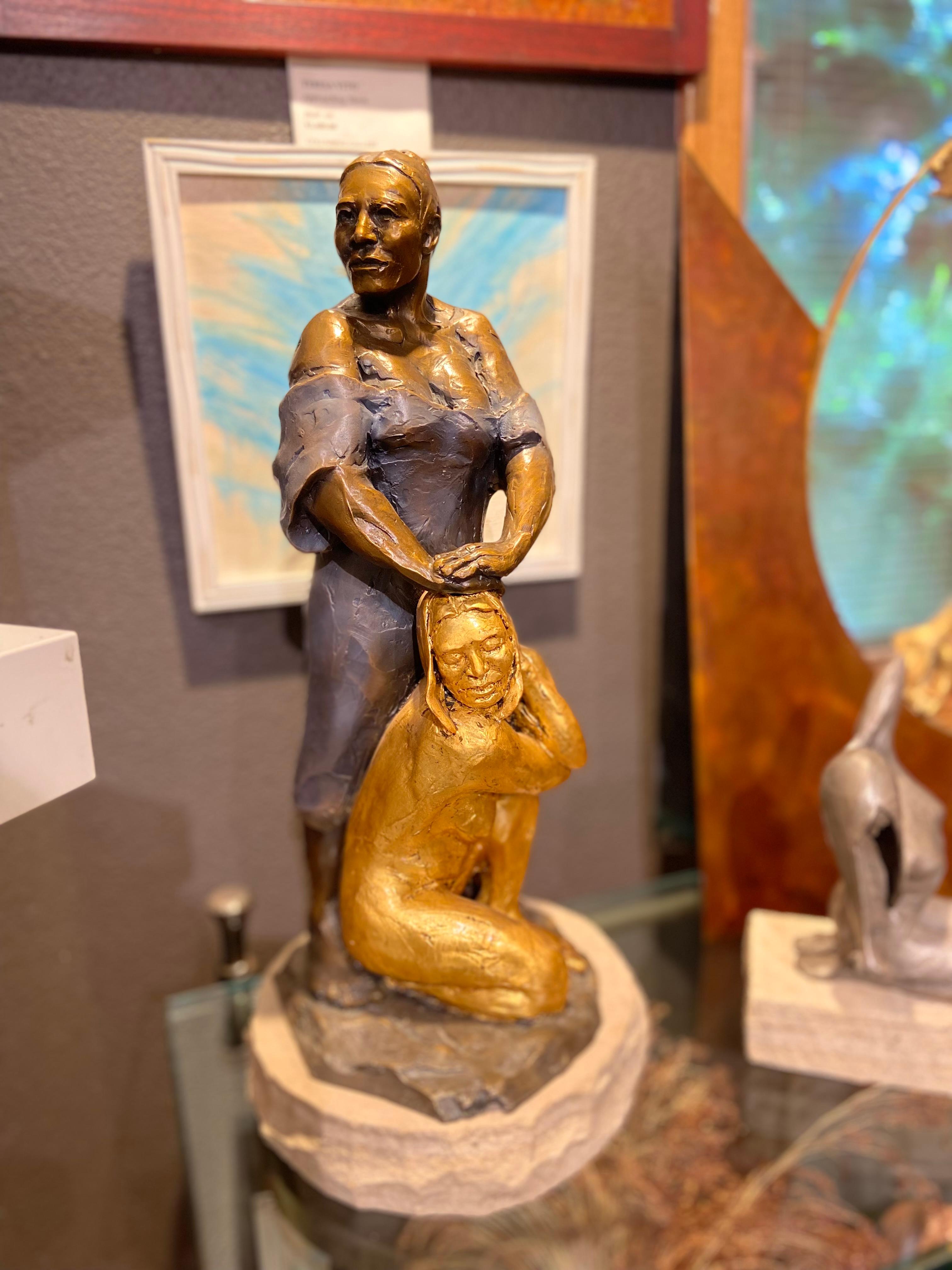Items Similar to Indian Pink Sandstone Figure of a Deity, Central India, 11th/12th century
Want more images or videos?
Request additional images or videos from the seller
1 of 6
UnknownIndian Pink Sandstone Figure of a Deity, Central India, 11th/12th centuryCirca 11th/12th century
Circa 11th/12th century
About the Item
Indian Pink Sandstone Torso of Brahma
Central India, ca. 12th century
Pink Sandstone
22 inches, 25 inches on base
In the Hindu pantheon Shiva is one of the most important gods along with Brahma and Vishnu. They are considered members of the holy trinity (trimurti) of Hinduism, though Shiva is also considered as the God of Gods. His existence represents infinity itself. He is the supreme masculine divinity in this universe and is second to none in wrath and power.
A complex character, he may represent goodness, benevolence and serve as the Protector. He is also associated with Time, and particularly as the destroyer of all things. Nevertheless, Shiva is also associated with creation. In Hinduism, the universe is thought to regenerate in cycles (every 2,160,000,000 years). Shiva is the destroyer of the universe so that from the formless void, it may be created again. Shiva is also known as the great ascetic, abstaining from all forms of indulgence and pleasure, concentrating rather on meditation as a means to find perfect happiness. Shiva is also the master of fertility as well as the master of poison and medicine and he is the Lord of Cattle.
For centuries devotees and scholars have romanticized the image of Lord Shiva. He can be depicted with his body smeared with ash, wearing a tiger skin with crescent moon in his hair. He may have a snake around his neck and a third eye; the river Ganga flowing from the matted hair with, a trident in one hand, a hand-drum in the other. Sometimes he is consumed in a cosmic dance and sometimes he is sitting still as a stone. Along with these different manifestations, there are also 1008 names of God Shiva to describe his attributes.
This figure at one point would have four arms which represent the four cardinal directions.
- Creation Year:Circa 11th/12th century
- Dimensions:Height: 22 in (55.88 cm)Width: 10.5 in (26.67 cm)Depth: 6 in (15.24 cm)
- Medium:
- Period:
- Condition:Though this piece clearly suffered damage from ancient marauders, the piece is very fine and presents wonderfully. The swollen belly exudes prana, or the breath of life.
- Gallery Location:SANTA FE, NM
- Reference Number:1stDibs: LU140826798702
About the Seller
5.0
Platinum Seller
These expertly vetted sellers are 1stDibs' most experienced sellers and are rated highest by our customers.
Established in 1995
1stDibs seller since 2020
90 sales on 1stDibs
Typical response time: 1 hour
- ShippingRetrieving quote...Ships From: Santa Fe, NM
- Return PolicyA return for this item may be initiated within 2 days of delivery.
More From This SellerView All
- Antique 19th century Bronze Dog Portrait of a Maltese on a Marble BaseLocated in SANTA FE, NMAntique Bronze Dog Portrait of a Maltese on a Marble Base French 19th century 1/2 x 8 x 5 1/2 inches The chiseled bronze has a nuanced, rich brown patina depicting a Maltese in the round, seated on a quadrangular marble base decorated with very fine gilt bronze flowers and fluted feet. Napoleon III, Louis XVI style. Based on a model by Jacques Caffieri for the Prince de Condé in 1773. (More images to be added.) Executed during the nineteenth century, this figure is fully in line with the eclectic taste of the reign of Napoleon III. Indeed, the Empress Eugenie brought the Louis XVI style up to date in her castle of Compiègne. Jacques Caffieri is one of the most famous bronze smiths of the eighteenth century. In 1715 he was admitted as a master caster and chiseler, and worked almost exclusively for the crown castles...Category
19th Century Rococo Figurative Sculptures
MaterialsMarble, Bronze
- Pair of Italian "Alabaster Stone Lions" after Antonio Canova; Mid 19th CenturyLocated in SANTA FE, NM"Pair Recumbent Stone Lions" after Antonio Canova (1757-1822) Italian (possibly Florence) Mid 19th Century Alabaster, marble 6 x 9 x 4 inches This is an exquisite pair of Italian alabaster lions on marble bases based on the monumental lions carved by Antonio Canova (1757-1822), the greatest Italian neoclassical sculptor. Canova sculpted the marble lions for the monumental tomb of Pope Clement XIII in St. Peter’s, Rome in 1792 Canova Lions refers to the pair of copies of lion sculptures by Antonio Canova. When Canova created the sculptures in 1792, he installed them on the tomb of Pope Clement XIII. The marble sculptures are some of the most prominent features in St. Peter's Basilica in Rome. Given the intricacies of creating the original Canova lions, some artists created molds and replicated them. A good example is the pair of lion sculptures...Category
1850s Italian School Figurative Sculptures
MaterialsAlabaster, Marble
- Balancing Elephant, Circa 1930s, Art Deco, Louis-Albert Carvin (1875-1951)Located in SANTA FE, NMBalancing Elephant Louis-Albert Carvin (France, 1875-1951) Bronze, marble Circa 1930s, Art Deco 8 x 7.5 x 2 (4 1/4 x 7 1/2 x 1 7/8 figure) inches Artist Louis-Albert Carvin, born in Paris in 1875, was exposed to art from an early age through his painter father. Carvin's formal education in art began at the École des Beaux-Arts, where he studied under artists like Émmanuel Frémiet and Georges Gardet. Over the years, artist Louis-Albert Carvin became a renowned sculptor, dedicating his life’s work to the modeling of human and animal figures. He studied under Fremiet and Gardet and became a member of the Société des Artistes Français, exhibiting at the Salon des Artists Francais from 1894 until 1933 winning the Medal of Honor in his first year in 1894. Remarkably, he sculpted La Muse de l’Aviation, the bronze trophy...Category
1930s Art Deco Figurative Sculptures
MaterialsMarble, Bronze
- Antique Pair of Russian Wolf Hound/Borzoi Dog Portrait Sculptures circa 1930'sLocated in SANTA FE, NMAntique Pair of Russian Wolfhounds/Borzois Dog Portrait Sculptures by Scalini (aka Scali; Italian, 20th century) circa 1930's Patinated spelter 9 x 14 inches (on bases) Though rath...Category
1920s Art Deco Figurative Sculptures
MaterialsCast Stone, Bronze
- Antique Exceptional Bronze Draft Horse by Pierre Jules Mêne (French, 1810-1879)Located in SANTA FE, NMAntique Horse Bronze Exceptional Bronze of a Draft Horse Pierre Jules Mêne (French, 1810-1879) Circa 1860s 4 3/4 (W) x 3.25 (H) As Mêne personally ov...Category
Mid-19th Century Romantic Figurative Sculptures
MaterialsBronze
- Antique Porcelain Dog Portrait Cavalier King Charles-Edmé Samson circa 1860Located in SANTA FE, NMAntique Porcelain Dog Portrait: Cavalier King Charles-Edmé Samson According to the model created by Johann Joachim Kaendler (MEISSEN around 1770). By the famous factory of Edmé Sams...Category
Mid-19th Century Rococo Figurative Sculptures
MaterialsPorcelain
You May Also Like
- Standing EngelLocated in Wien, WienStanding angel with banner Flemish Around 1450/60 Sandstone 60 x 21 x 15 cm This museum figurine shows a standing angel with a banner in his right hand and a small box in his left. The youthful, ageless figure wears a coat held together with a triangular, floral brooch in front of the chest over a long robe. The angel’s gaze is directed forward, his head tilted slightly to the left. The elongated face is sculpted: the large almond-shaped eyes with accentuated upper and lower eyelids are alertly open and sharp eyebrows lead directly into the root of the nose. The straight nose above the pronounced mouth completes the idealized oval face of the angel and his calm, internalized facial expression. What is particularly remarkable, however, is the magnificent curls, which are only partially tamed by a simple headband. As if puffed up by the wind, the hair, which is sometimes streaked in parallel, sometimes wildly twisted and richly curled, stands out dynamically from the ears. The tilted head with these sideways protruding waves of hair thus conveys an immediate impression of movement. The physicality of the sculpture is expressed particularly through this organic, lifelike movement of the loosened hair. The lively overall impression of the figure is further enhanced by the multiple rolled banners that the angel presents to the viewer. The outstretched palm of the right hand appears both intimate and confidential as well as mystically revealing. This banderole winds in gentle curves in front of the figure’s body, throws a fold over the second attribute in the angel’s left hand and falls downwards in a loose manner. The volute-shaped rolled up end of the banner clearly shows the fine texture of the banner and at the same time draws the viewer’s attention to the small cube-shaped box that the angel is holding in its slender, long-limbed fingers. The cube is decorated with a Gothic quatrefoil motif, which is often seen in the architectural tracery of windows, but was also often used to decorate caskets and other small treasures. The sweeping gestures in the presentation of the attributes suggest three-dimensionality, in contrast to the tubular folds at the base of the neck and the intricate draperies in flat and multiple overlapping garment sections. The soft curves of the folds give the impression that the clothing is made of a heavy fabric that falls diagonally down the front and is laid in several bowl folds under the right hand. Overall, the sculptural work testifies to the highest artistic skill, which emphasizes the virtuosity of sculpture in its precious and representative overall impression. The memorable characteristics recognizable here can be seen in comparable pictorial works from Utrecht around the middle of the 15th century, when sculptural art – especially stone sculpture – was characterized by a remarkably high quality. Particularly noteworthy is the accentuated Utrecht head type with an elongated oval face, almond-shaped eyes with heavy lids and dense, vividly protruding tufts of hair framing the head. For example, the figure is comparable to a capital of an angel on the east side of the rood screen of the Joriskerk in Amersfoort (province of Utrecht) from the second quarter of the 15th century. Not only the physiognomy and hair, which in the comparative example stand somewhat more horizontally to one side, but also the garment puff above the girdle are similar. Even more related motifs, such as the cleverly placed bowl folds, can be found on the limestone figure...Category
15th Century and Earlier Figurative Sculptures
MaterialsSandstone
- Warthog Bust - Bronze Wildlife SculptureLocated in Pretoria, ZABronze Warthog Bust on Sandstone base H 16 cm x W 13 cm x D 8 cm. Base size 8 x 8 x 4 cm. Edition 2 of 9 - ready for shipping. Meticulously crafted, this bronze artwork captures the ...Category
2010s Expressionist Figurative Sculptures
MaterialsSandstone, Bronze
- Black Rhino Bust - Bronze Sculpture - Limited EditionLocated in Pretoria, ZABlack Rhino Bust with brown green patina, Limited Edition of 12, bronze sculpture on Sandstone base. The first time I was sculpting in the field, all I saw oft this magnificent Black...Category
2010s Figurative Sculptures
MaterialsSandstone, Bronze
- “Knife Wrestlers”, After The Statue By J. P. Molin, Stockholm 1867Located in PARIS, FRRare and imposing reduction of the famous statue of JP Molin, inaugurated in 1867 in front of the National Museum of Stockholm. This version in black enamelled stoneware was produced...Category
1860s Academic Figurative Sculptures
MaterialsSandstone
- KimikoBy Gary AlsumLocated in Loveland, COKimiko by Gary Alsum Bronze ed/7, 54x19x20", comes with 3" high, 24" diameter sandstone round base as pictured in the garden images. Young woman in traditional attire holding an fan. Ideal scale for a garden setting. ABOUT THE ARTIST: Taking the knowledge passed on from artists such as Fritz White, Glenna Goodacre...Category
Early 2000s Realist Figurative Sculptures
MaterialsSandstone, Bronze
- Our LoveBy Denny HaskewLocated in Loveland, CO"Our Love" by Denny Haskew Figurative Female Nude 23x10x10" Bronze with Gold Leaf, Limited Edition of 21 (#2 available) Sandstone base included "Love isn't something you find. Love...Category
2010s Contemporary Figurative Sculptures
MaterialsSandstone, Gold Leaf, Bronze
Recently Viewed
View AllMore Ways To Browse
The Protector
Antique Art Of India
12th Century
Indian Pink
Third Century Sculpture
11th Century
Used Hand Drum
Indian Figure
Antique Sandstone
Indian Antique Sculpture
Deity Sculpture
15th Century Stone Sculpture
Sculpture Of A Tiger
Dance India
Fertility Sculptures
Medicine Sculpture
Sculpture Of Sitting Figure
Black Torso Sculpture
